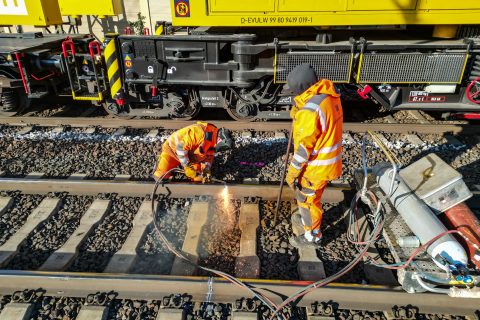Major rail project in Middle East, US leverage against China-Russia

Jake Sullivan, the White House National Security advisor, met with his Saudi, Emirati and Indian counterparts and discussed a joint railway project linking the Middle East to India via a railway network crossing Saudi Arabia, the UAE and shipping lines from the Gulf of Oman to Indian ports.
The project is still in the very early discussion stages, and there’s nothing concrete in this sense. However, according to a report from Axios, the four states consider the possibility very seriously.
A railway project linking Saudi Arabia with the UAE and India via sea would not only bring logistical and trade benefits to the states involved. In fact, it would attempt to balance the influence of two other major players: China with its Belt and Road initiative and Russia with the International Nort-South Transport Corridor (INSTC).
Middle Eastern status quo
Russia and China being close friends is old news. The same applies to their growing influence in Central Asia and the Middle East. On the one hand, Russia has found a key partner in Iran to diversify its supply chains and exports from north to south on the way to India via the INSTC. It is cooperating with it financially via the merging of the two states’ interbank payment systems and by actively participating in joint investments in Iranian railway infrastructure. Moreover, the Russian-led INSTC is becoming enticing for more Middle Eastern countries, with Bahrain recently expressing its willingness to participate in the project.
On the other hand, China played a key role in reviving the long problematic diplomatic relations between Iran and Saudi Arabia and advocates for the Chinese Yuan to become one of the main oil exchange and trade currencies. Many of China’s oil suppliers are already accepting payments in Yuan. Consequently, both Russia and China, with each other’s backing, are expanding in the region, using different means that serve the same cause.
What happens with India?
Despite China-India not cooperating closely, the second has been tightening its ties with Russia lately, eying mostly trade possibilities through the INSTC and sea shipping. Theoretically, India is one of China’s main competitors in Asia. Nevertheless, this does not prevent it from building cooperation with Russia. One of the latest developments on this front concerns the Russo-Indian partnership on the Caspian Sea with shipbuilding and maintenance joint ventures that aim to tap the multimodal potential of the INSTC.
However, despite India seeing a strategic trade and military partner in Russia, the state attempts to also stay close to the US by adopting a neutral position regarding international conflicts and relying heavily on it for international trade.
The Middle East railway project
The shared US, Saudi, Emirati and Indian plans for a rail-sea corridor linking the Middle East with India could put pressure on China and Russia by underlying that the US presence in the region is strong and contributes to investments and by providing alternatives to the Chinese and Russian transport corridor monopoly.
A rail-sea corridor linking Saudi Arabia, the UAE and India could also incentivise other states in the region to jump in and connect some of the world’s most robust and promising economies. On top of that, it could also provide a direct link to the Mediterranean Sea. This might be a far-fetched dream for some; however, according to Axios’ insights, the second pillar that Sullivan wants to discuss with his counterparts in Saudi Arabia is the relations of the country with Israel and the possibility to normalise them further.
Saudi Arabia and Israel do not have diplomatic relations, but they cooperate on many levels, while Israel and the UAE have fully reinstated their diplomatic relations. The two agenda items coinciding should not be attributed to luck but to a dynamic US intervention in the Middle East to restore balance, with railway and transport investments playing a leading role.
Also read:
-
Under pressure: Russia-India attempt to speed up INSTC trade
-
From Moscow to Mumbai: geopolitical powerplay determines the corridor’s future
You just read one of our premium articles free of charge
Want full access? Take advantage of our exclusive offer




